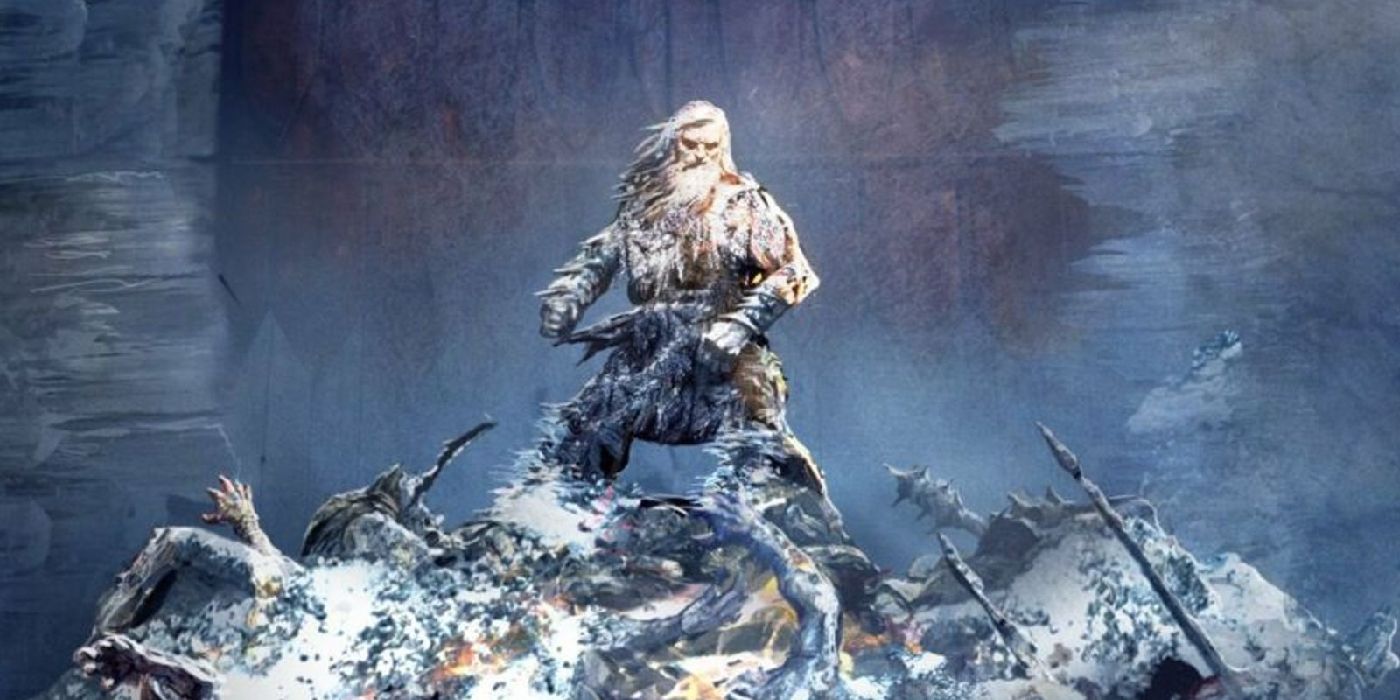
The ending of The War of the Rohirrim helps set the stage for Rohan as it will exist in the context of The Lord of the Rings. The echoes of the conflict at the center of the Lord of the Rings anime adventure are felt long after the events of the movie, as the exploits of Helm Hammerhand during the war led to him attaining a legendary status. Hammerhand is a key character in the recent history of Middle Earth, and the most significant event of his reign is well worth exploring with a feature-length adaptation.
Helm Hammerhead Was The Ninth King Of Rohan: Full History Explained
Hammerhand Was The Last Of Rohan’s First Line Of Kings

Helm Hammerhand was a direct descendant of Eorl the Young, the first king of Rohan. Eorl reigned over the province of Calenardhon (which would later become known as Rohan) beginning in the year 2510 of the Third Age. Calenardhon was given as a reward to Eorl and his people by Cirion, the steward of Gondor for coming to the rescue of Gondor’s army in a great battle against an army of Easterlings under the influence of Sauron known as the Balchoth. Eorl’s line continued to rule Rohan, and Helm Hammerhand became the ninth king of Rohan in TA 2741.
The Lord of the Rings: The War of the Rohirrim – Key Details
Release Date
Budget
Box Office Gross
RT Tomatometer Score
RT Popcornmeter Score
December 13th, 2024
$30 million
$2 million (international debut)
52%
86%
Given their location between the Misty Mountains and the White Mountains, the people of Rohan had long been harassed by foreign enemies, and during Helm Hammerhand’s life their main tormentors were the Dunlendings, the race of wild men whose land bordered Rohan. As the Crown Prince of Rohan, Helm Hammerhand was likely seasoned in battle against the Dunlendings, who frequently raided the outer territories of Rohan. By the time he was finally crowned king at the age of 50, hostilities with the Dunlendings had reached a boiling point, which is roughly where The War of the Rohirrim picks up.
Helm Hammerhead’s Role In War Of The Rohirrim Explained
The Movie Chronicles His Family’s Battle To Defend Their Kingdom

The main conflict in The War of the Rohirrim stems from Helm Hammerhand’s dealings with Freca, a Rohirric landowner who bears the darker countenance of a person who has Dunlending blood. Despite claiming to be a descendant of past kings of Rohan, Hammerhand doesn’t trust Freca, and bristles when he attempts to threaten the king (with a small army at his back) to wed his son Wulf to Helm’s daughter Hèra. The ensuing argument comes to blows, and Helm kills Freca with no more than his powerful fist, earning him the name ‘Hammerhand’.
That leads to an uprising, with Wulf taking Freca’s men and declaring himself against the throne. He would eventually return with a mighty force and overrun Rohan. Helm Hammerhand and his allies are driven back to a final defense at the Súthburg, where Wulf and his allies lay siege to them. During the course of the siege, Helm Hammerhand ascends to a mythical, almost supernatural status, as a number of times he snuck out and killed many enemies with his bare hands. Helm dies fighting in the snow, and is discovered frozen standing up, still ready to fight.
In their fear, the Dunlendings pictured Helm as a legitimate wraith, and even believed that he would feast on the flesh of men after killing them with his bare hands.
Helm’s legendary status as a barehanded fighter and lethal combatant led to both the Rohirrim and the Dunlendings believing that he had become a wraith, a vengeful spirit that still defended the fortress even in death. Helm was succeeded by his nephew Fréaláf, who used Helm’s armor and the deep sound of his war-horn to scare the Dunlendings into thinking Helm’s wraith had come back, ultimately causing them to flee.
Brian Cox Voices Helm Hammerhead In War Of The Rohirrim
The Emmy Award Winner Has A Long History Of Top-Flight Voice Work










In The Lord of the Rings: The War of the Rohirrim, Helm Hammerhand is voiced by Brian Cox, a legend of screen and stage with a long history of voice work in addition to his lengthy filmography. Most recently, Cox is best known for playing family patriarch Logan Roy in Max’s Emmy Award-winning drama Succession. His work has ranged from small British theater to American blockbusters, as Cox famously appeared in the X-Men franchise as Colonel William Stryker, the Planet of the Apes franchise, Wes Craven’s Red Eye, and the Jason Bourne franchise starring Matt Damon.
Cox has appeared in a number of period dramas and action adventures that make him an ideal fit for The War of the Rohirrim despite its fantasy foundations. His roles in Braveheart, Troy, and The Reckoning all gave him experience with the sort of ancient royalty necessary to accurately portray Helm Hammerhand. On top of his acting credits, Cox has years of voice work, especially in modern video games, which makes him a great fit for the role.
How Lord Of The Rings: The Two Towers References Helm Hammerhead
The Climactic Battle Occurs At The Great Fortress Named For Hammerhand










The Lord of the Rings: The Two Towers is most famous for the massive battle between the last, desperate forces of Rohan and Saruman’s massive army of Uruk-hai that acts as the movie’s third act. The battle takes place at the gates of the mountain fortress named after Helm Hammerhand after his valor and wrath helped save the kingdom of Rohan from Wulf and his forces. The Súthburg was renamed the Hornburg, and the entire location was renamed Helm’s Deep; the siege in The Two Towers is an echo of the siege depicted in The War of the Rohirrim.
Gimli is sent to blow the horn of Helm Hammerhand, intended to intimidate their enemies just as it had hundreds of years before when it acted as a harbinger of Helm’s wrath.
Peter Jackson’s acclaimed sequel even shows a massive statue of Helm Hammerhand when Theoden and his people first arrive at Helm’s Deep after their flight from Edoras. Finally, as Theoden and Aragorn prepare their last charge against the Uruk-hai that have surrounded the Hornburg, Gimli is sent to blow the horn of Helm Hammerhand, intended to intimidate their enemies just as it had hundreds of years before when it acted as a harbinger of Helm’s wrath. The Two Towers in general acts as an echo across time, as the Battle of Helm’s Deep bears many of the same narrative elements of The Lord of the Rings: The War of the Rohirrim.





